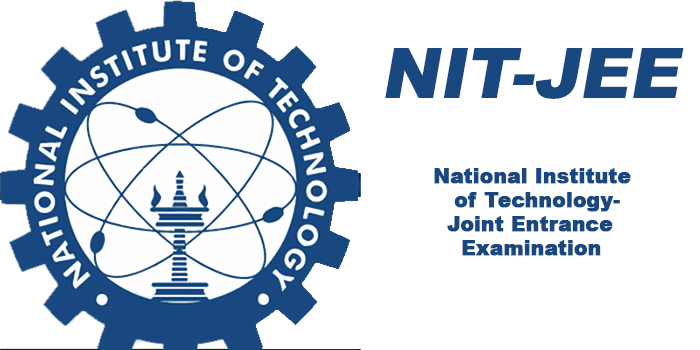
The National Institute of Technology–Joint Entrance Examination (NIT–JEE) is an entrance examination conducted by the National Institutes of Technology (NITs) in India. It is conducted for admission to various undergraduate engineering and architecture programmes offered by the NITs. The exam is conducted in both online and offline mode. The exam is conducted once a year in the month of April–May.
National Institute of Technology–Joint Entrance Examination (NIT–JEE) Entrance Test
The NIT–JEE is an entrance exam for admission to the undergraduate programs at the National Institutes of Technology (NITs). It is conducted by the National Testing Agency (NTA) for admission to various engineering and technology programs at the NITs. The exam is conducted in two stages– the Paper I and Paper II.
The Paper I is held in the month of April and is a Computer Based Test (CBT). The Paper I consists of 75 multiple choice questions from Physics, Chemistry and Mathematics. Candidates have to attempt all the questions in a duration of 3 hours.
The Paper II is held in the month of June and is a Descriptive Test. The Paper II consists of two essays, one from Physics and the other from Chemistry.
Candidates have to attempt both the essays in a duration of 1 hour. The NIT–JEE is a highly competitive exam and the cut off marks for each NIT varies. Candidates who qualify the entrance exam will be eligible for admissions to their preferred NITs.
National Institute of Technology–Joint Entrance Examination (NIT–JEE) Eligibility Criteria
To be eligible for the NIT–JEE, applicants must fulfill the following criteria:
1. Applicants must be Indian citizens.
2. Applicants must have passed or appeared for the Class XII board examination or other equivalent qualifying examinations.
3. Applicants must have obtained a minimum aggregate of 60% marks in their qualifying examinations.
4. Applicants must have studied Physics, Chemistry, Mathematics and English as compulsory subjects in their Class XII board examination or other equivalent qualifying examinations.
5. Applicants must be at least 17 years of age at the time of appearing for the exam.
6. Applicants must fulfill the other eligibility criteria specified by the NITs.
National Institute of Technology–Joint Entrance Examination (NIT–JEE) Colleges In India
1. National Institute of Technology, Tiruchirappalli (NITT)
2. National Institute of Technology, Warangal (NITW)
3. National Institute of Technology, Calicut (NITC)
4. National Institute of Technology, Delhi (NITD)
5. National Institute of Technology, Durgapur (NITDGP)
6. National Institute of Technology, Rourkela (NITRKL)
7. National Institute of Technology, Surathkal (NITSKL)
8. National Institute of Technology, Hamirpur (NITH)
9. National Institute of Technology, Agartala (NITAG)
10. National Institute of Technology, Patna (NITP)
11. National Institute of Technology, Kurukshetra (NITKKR)
12. National Institute of Technology, Srinagar (NITS)
13. National Institute of Technology, Raipur (NITRR)
14. National Institute of Technology, Silchar (NITSLC)
15. National Institute of Technology, Karnataka (NITK)
16. National Institute of Technology, Arunachal Pradesh (NITAP)
17. National Institute of Technology, Meghalaya (NITMEG)
18. National Institute of Technology, Manipur (NITMN)
19. National Institute of Technology, Goa (NITGOA)
20. National Institute of Technology, Uttarakhand (NITUK)
National Institute of Technology–Joint Entrance Examination (NIT–JEE) List of Stream
The NIT–JEE offers a variety of streams for students to choose from. These include:
1. Civil Engineering
2. Mechanical Engineering
3. Electrical Engineering
4. Electronics and Communication Engineering
5. Computer Science and Engineering
6. Chemical Engineering
7. Biotechnology
8. Architecture
9. Material Science and Metallurgical Engineering
10. Mining Engineering
11. Aerospace Engineering
12. Automobile Engineering
13. Information Technology
14. Instrumentation and Control Engineering
15. Production and Industrial Engineering
16. Textile Technology
17. Rubber Technology
18. Polymer Science and Technology
19. Pharmaceutical Science and Technology
20. Bioinformatics
21. Environmental Science and Engineering
22. Energy and Environment Engineering
23. Geological Technology
24. Marine Engineering
25. Nuclear Engineering
26. Food Technology
27. Biomedical Engineering
28. Automation and Robotics
National Institute of Technology–Joint Entrance Examination (NIT–JEE)Syllabus
The NIT–JEE syllabus consists of topics from Mathematics, Physics, Chemistry, and Engineering Aptitude.
Mathematics:
– Algebra (Sets, Relations, Functions, Complex Numbers, Quadratic Equations, Permutations and Combinations, Binomial Theorem, Matrices and Determinants, Sequences and Series, Limits and Continuity, Differentiation, Integrals, Differential Equations)
– Trigonometry (Trigonometric Identities and Equations, Properties of Triangles, Heights and Distances)
– Coordinate Geometry (Straight Lines, Circles, Parabola, Ellipse, Hyperbola)
– Vector Algebra (Vectors and Their Applications, Vector Components, Vector Addition, Vector Subtraction, Vector Multiplication)
– Probability and Statistics (Measures of Central Tendency, Probability, Standard Deviation, Correlation and Regression)
Physics:
– Units and Measurement
– Kinematics
– Laws of Motion
– Work, Energy and Power
– Rotational Motion – Gravitation
– Properties of Solids and Liquids
– Thermodynamics
– Oscillations and Waves
– Electrostatics
– Current Electricity
– Magnetic Effects of Current
– Electromagnetic Induction and Alternating Current
– Optics – Dual Nature of Matter
– Atomic Physics
– Nuclear Physics
Chemistry:
– States of Matter
– Atomic Structure
– Chemical Bonding
– Solutions
– Chemical Equilibrium
– Chemical Kinetics
– Chemical Thermodynamics
– Surface Chemistry
– Electrochemistry
– Isomerism
– Transition Elements
– Chemical Families
–Periodic Properties
– Hydrogen
– s–Block Elements
– p–Block Elements
– Organic Chemistry
Engineering Aptitude:
– Engineering Mathematics
– Engineering Mechanics
– Strength of Materials
– Theory of Machines
– Fluid Mechanics
– Heat Transfer
– Thermodynamics
– Power Plant Engineering
– Automobile Engineering
– Industrial Engineering
– Production Engineering
– Control Systems
– Electrical Engineering
– Communication Engineering
– Computer Engineering
– Environmental Engineering
– Civil Engineering
– Engineering Drawing



